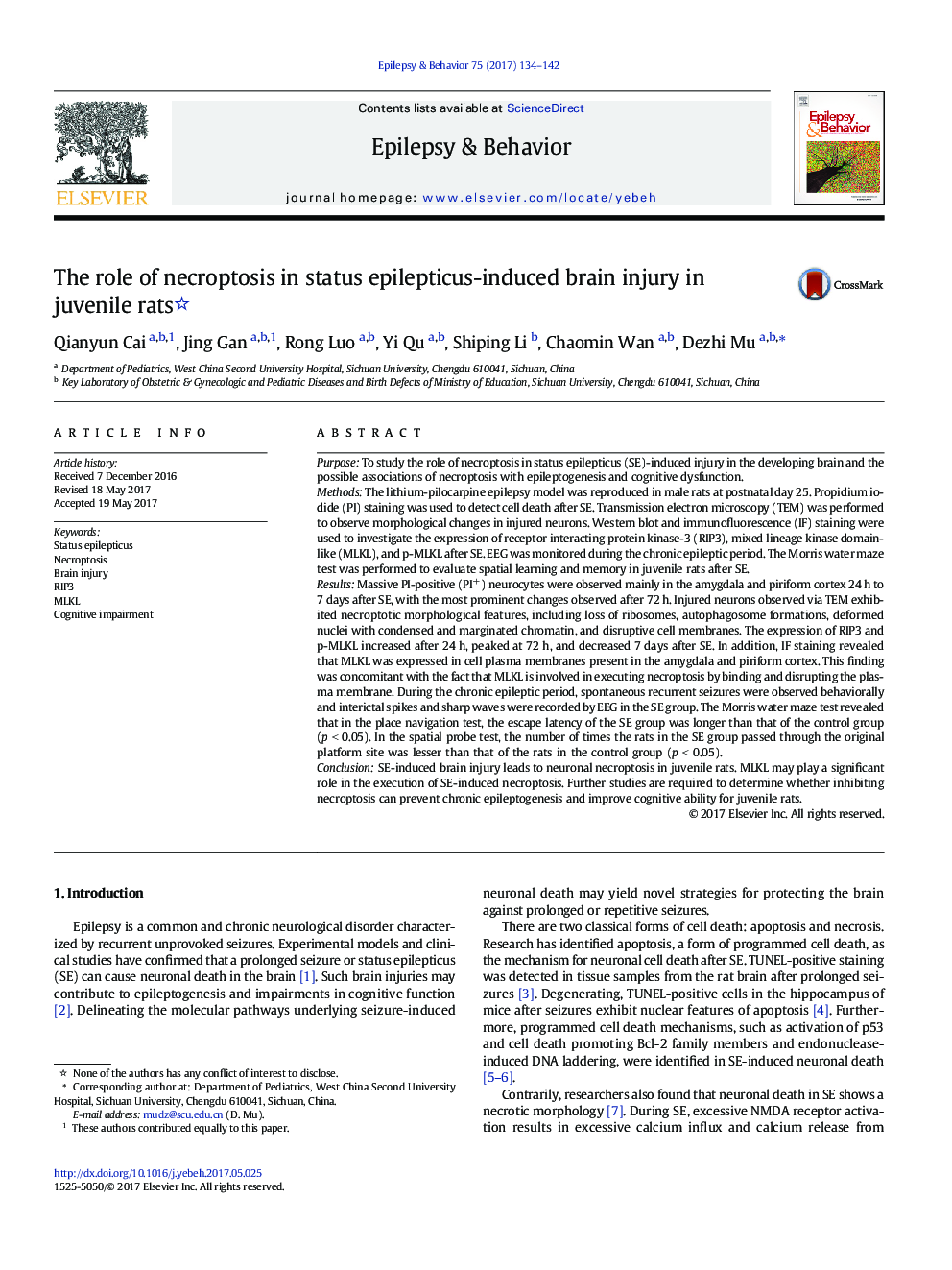| کد مقاله | کد نشریه | سال انتشار | مقاله انگلیسی | نسخه تمام متن |
|---|---|---|---|---|
| 5628138 | 1579818 | 2017 | 9 صفحه PDF | دانلود رایگان |
- Status epilepticus (SE) leads to neuronal necroptosis in juvenile rats.
- RIP3 and MLKL may participate in the process of SE-induced necroptosis.
- Inhibition of necroptosis may become a novel pathway to attenuate SE-associated damage to the immature brain and improve cognitive ability.
PurposeTo study the role of necroptosis in status epilepticus (SE)-induced injury in the developing brain and the possible associations of necroptosis with epileptogenesis and cognitive dysfunction.MethodsThe lithium-pilocarpine epilepsy model was reproduced in male rats at postnatal day 25. Propidium iodide (PI) staining was used to detect cell death after SE. Transmission electron microscopy (TEM) was performed to observe morphological changes in injured neurons. Western blot and immunofluorescence (IF) staining were used to investigate the expression of receptor interacting protein kinase-3 (RIP3), mixed lineage kinase domain-like (MLKL), and p-MLKL after SE. EEG was monitored during the chronic epileptic period. The Morris water maze test was performed to evaluate spatial learning and memory in juvenile rats after SE.ResultsMassive PI-positive (PI+) neurocytes were observed mainly in the amygdala and piriform cortex 24 h to 7 days after SE, with the most prominent changes observed after 72 h. Injured neurons observed via TEM exhibited necroptotic morphological features, including loss of ribosomes, autophagosome formations, deformed nuclei with condensed and marginated chromatin, and disruptive cell membranes. The expression of RIP3 and p-MLKL increased after 24 h, peaked at 72 h, and decreased 7 days after SE. In addition, IF staining revealed that MLKL was expressed in cell plasma membranes present in the amygdala and piriform cortex. This finding was concomitant with the fact that MLKL is involved in executing necroptosis by binding and disrupting the plasma membrane. During the chronic epileptic period, spontaneous recurrent seizures were observed behaviorally and interictal spikes and sharp waves were recorded by EEG in the SE group. The Morris water maze test revealed that in the place navigation test, the escape latency of the SE group was longer than that of the control group (p < 0.05). In the spatial probe test, the number of times the rats in the SE group passed through the original platform site was lesser than that of the rats in the control group (p < 0.05).ConclusionSE-induced brain injury leads to neuronal necroptosis in juvenile rats. MLKL may play a significant role in the execution of SE-induced necroptosis. Further studies are required to determine whether inhibiting necroptosis can prevent chronic epileptogenesis and improve cognitive ability for juvenile rats.
Journal: Epilepsy & Behavior - Volume 75, October 2017, Pages 134-142
